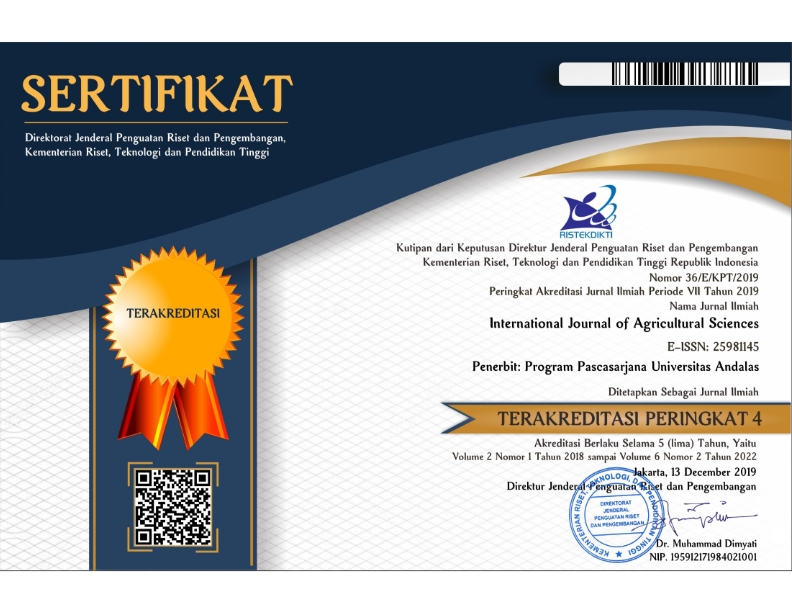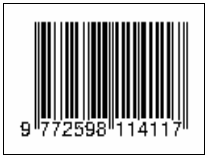
International Journal of Agricultural Sciences is an open access journal published by the Graduate Program of Andalas University. IJASC publishes original research findings from throughout the world related to strategic and applied studies in all aspects of agricultural science, as well as reviews of scientific books or other publications of current agricultural relevance.
Specific topics of interest include (but are not confined to):
1. All aspects of crop and animal farming and businesses,
2. The scientific underpinning of agronomy and animal husbandry,
3. Engineering solutions,
4. Agro-industrial systems,
5. Decision support systems,
6. Land use,
7. Environmental impacts of agriculture and forestry,
8. Socio-economics of agricultural development,
9. Impacts of climate change,
10. Rural biodiversity
11. Experimental design and statistical analysis,
12. The application of new analytical and study methods (including molecular studies).
Announcements
| No announcements have been published. | |
Vol 7, No 1 (2023)
Table of Contents
Articles
|
K.G.A.I. Rasanjali, C.S De Silva, L.K.R.R. Jayakody
|
1 - 7
|
|
|
Pardin Isa, Endry Martius, Faidil Tanjung
|
8 - 15
|
|
|
Malse Yulivestra, Muhammad Ichsan Kabullah, Hendri Koeswara, Novalinda Novalinda
|
16 - 23
|
|
|
Dwi Evaliza, Faidil Tanjung, Rafnel Azhari
|
24 - 29
|
|
|
Ifdal Ifdal, Ami Sukma Utami
|
30 - 37
|
|
|
Sijuwade Adebukola Adebayo, Ogundiran Tosin Joyce, Raphael Olanrewaju Babatunde
|
38 - 44
|




















